昨日,微软宣布在Azure AI Foundry(国际版)正式上线 GPT-5 Codex,并在 Visual Studio Code 的智能 GitHub Copilot 副驾驶® 中开启公共预览。
今天,我们将手把手带您完成模型操作,了解具体的部署方式,助您快人一步。
先决条件
- 拥有Azure 订阅账号
- 拥有 Azure AI Foundry 的 Contributor(参与者)权限。
- homebrew 或者 npm,使用 Codex Extension 安装 Codex CLI 或 VS Code。
在 Azure AI Foundry 中部署模型
1.访问 Azure AI Foundry 并创建新项目。
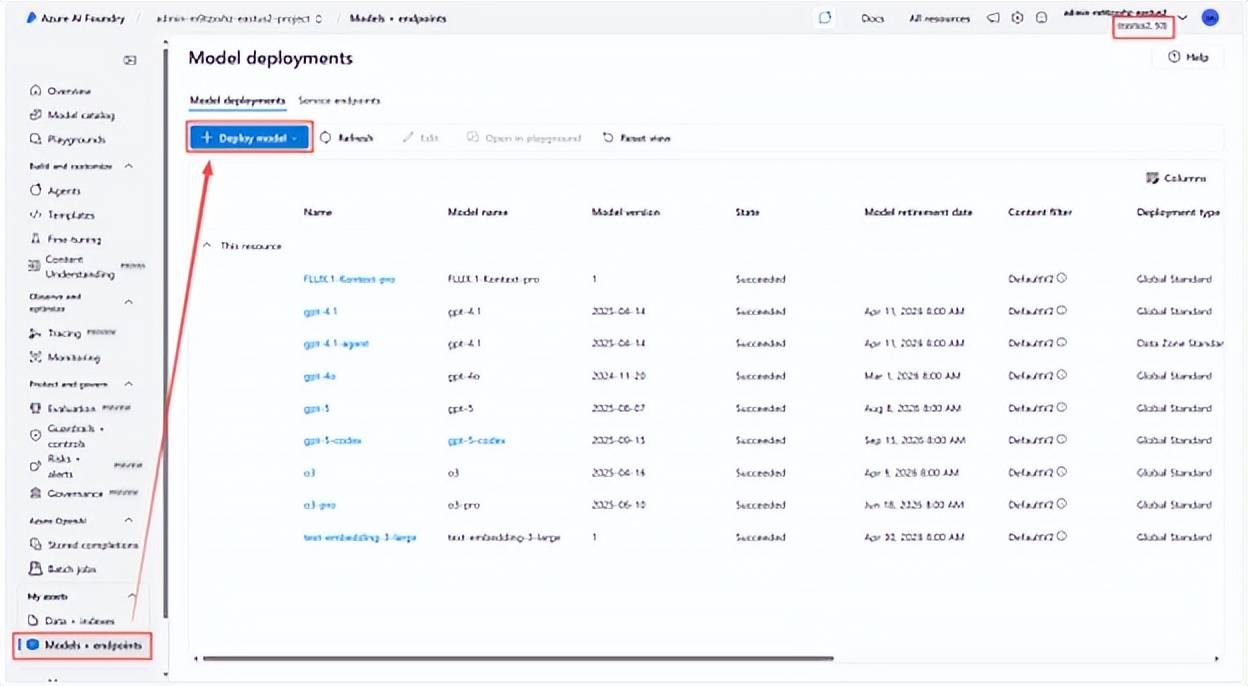
2.从模型目录中选择一个支持 Responses API 的模型,例如 GPT-5-codex。
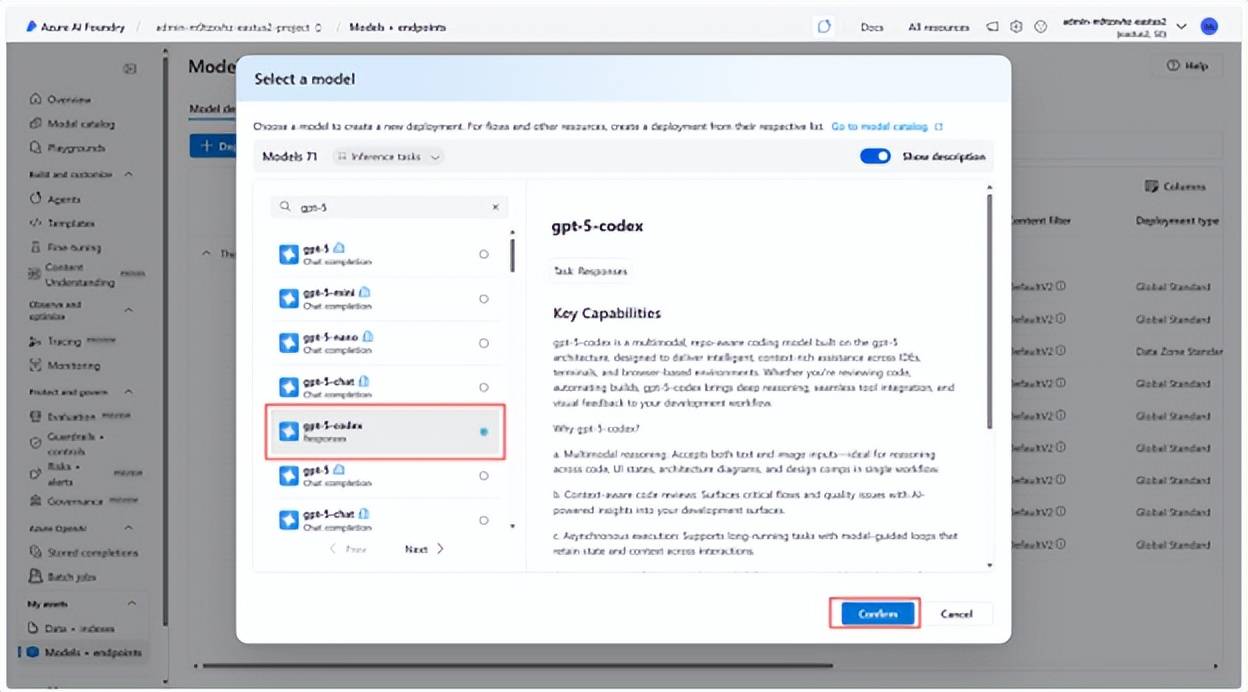
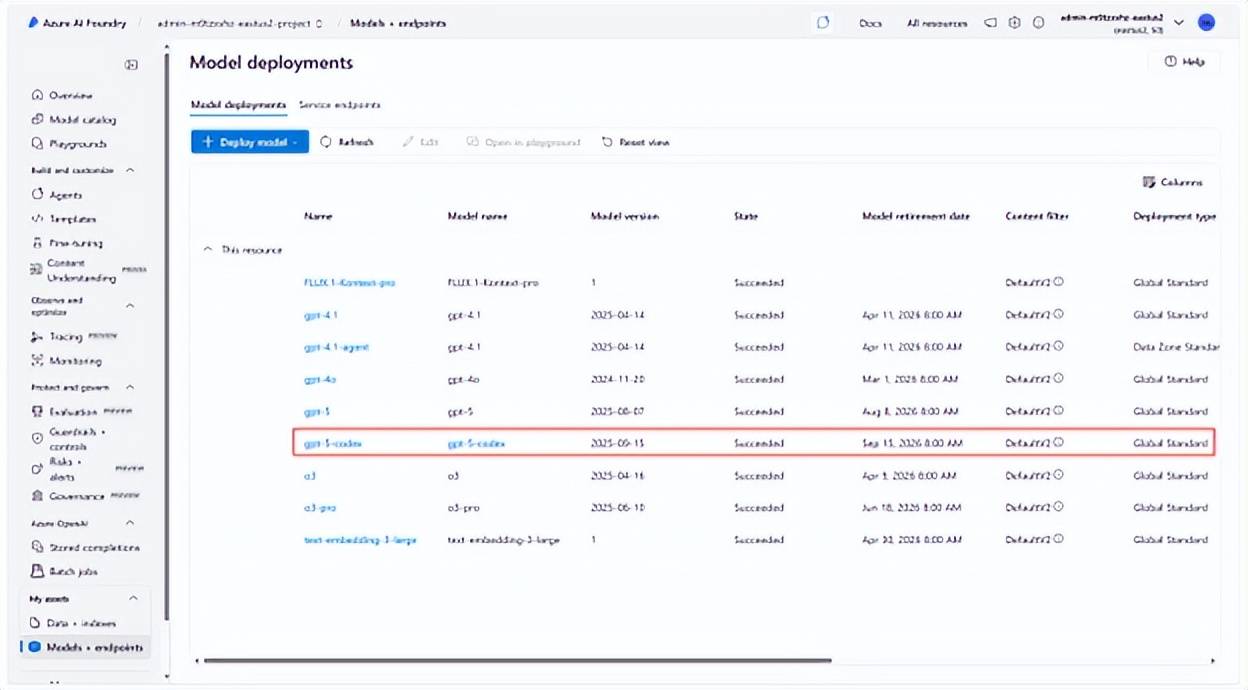
3.获取 Endpoint + API Key,并记录。格式分别为:
Endpoint: https://xxxx.openai.azure.com
API Key: xxxxxxxxxxxxxxxxxxxxxxxxx
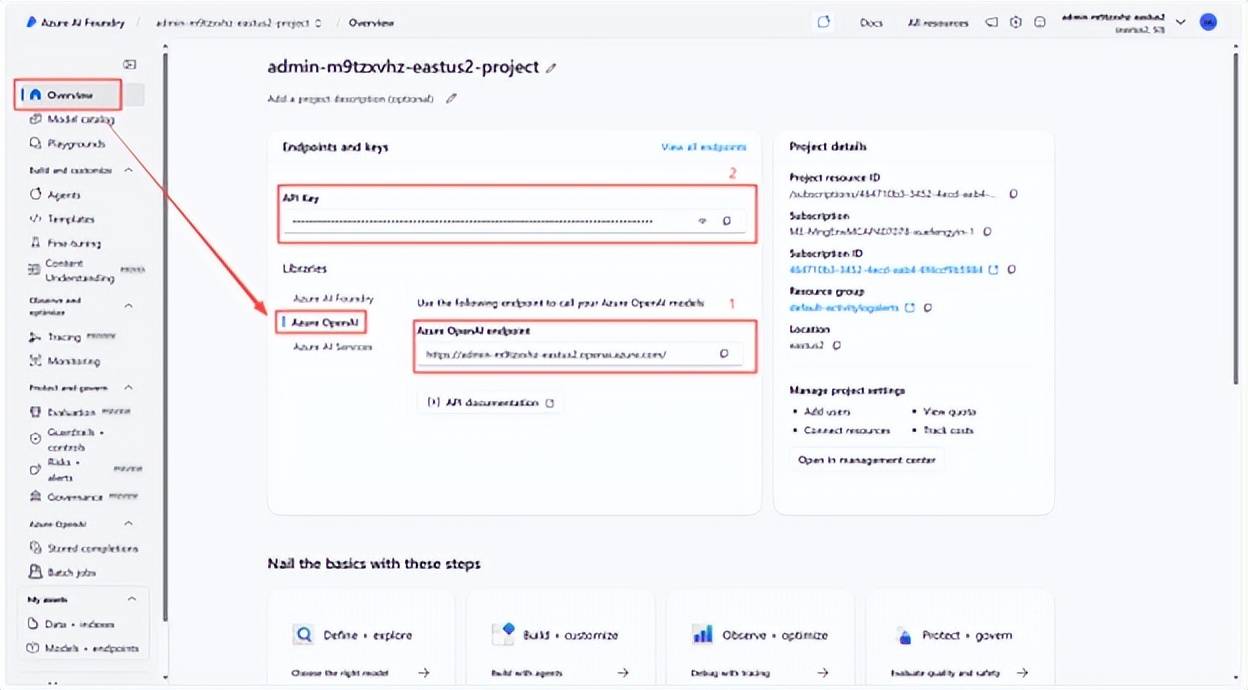
安装 Codex CLI
在终端中运行以下命令以安装 Codex CLI
npm
npm install -g @openai/codex
codex --version # verify installation
brew
brew install codex
codex --version # verify installation
创建和配置 config.toml
- 若要将 Codex CLI 与 Azure 配合使用,需要创建和设置 config.toml 文件。
- config.toml 文件需要存储在 ~/.codex 目录中。 在此目录中创建文件 config.toml ,或者编辑现有文件(如果已存在):
cd ~/.codex
nano config.toml
2.复制下方文本,使用 v1 Responses API。 借助 v1 API 您将不再需要传递 API 版本,但必须在路径中包含 base_url /v1。 不能将 API 密钥作为字符串直接传递给 env_key。env_key 必须指向环境变量。
使用您的资源名称更新 base_url:
model = "gpt-5-codex" # Replace with your actual Azure model deployment name
model_provider = "azure"
model_reasoning_effort = "high"
model_providers.azure
name = "Azure OpenAI"
base_url = "https://YOUR_RESOURCE_NAME.openai.azure.com/openai/v1"
env_key = "AZURE_OPENAI_API_KEY"
wire_api = "responses"
3.将更新 config.toml 保存到文件后,返回到终端,并创建配置文件中引用的环境变量实例。
Linux, macOS, or WSL
export AZURE_OPENAI_API_KEY="<your-api-key>"
4.最后,在终端中运行以下命令之一,测试 Codex CLI 配置是否成功:

在 VSCode 中使用 Codex Extension
1.在 VSCode 插件市场搜索并安装 Codex 插件
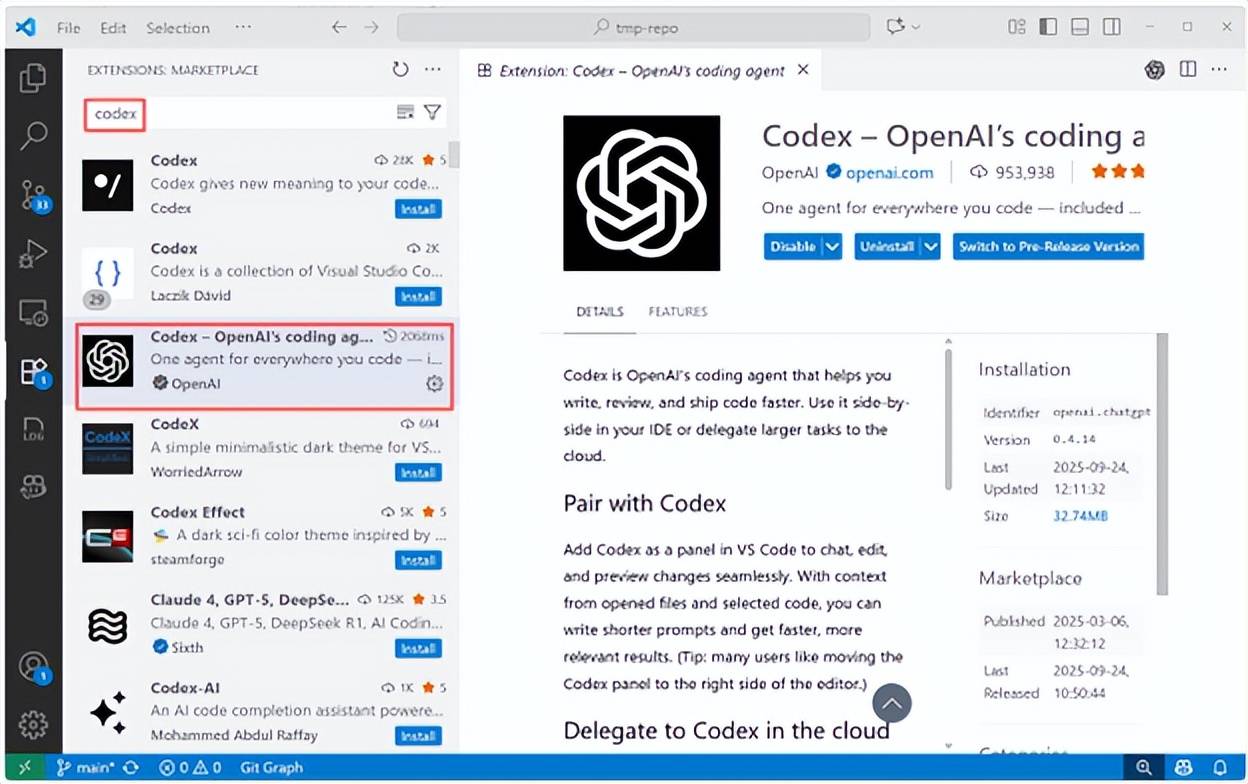
2.可以直接通过UI方式与Codex交互,并且与Codex CLI共享API配置与对话历史数据
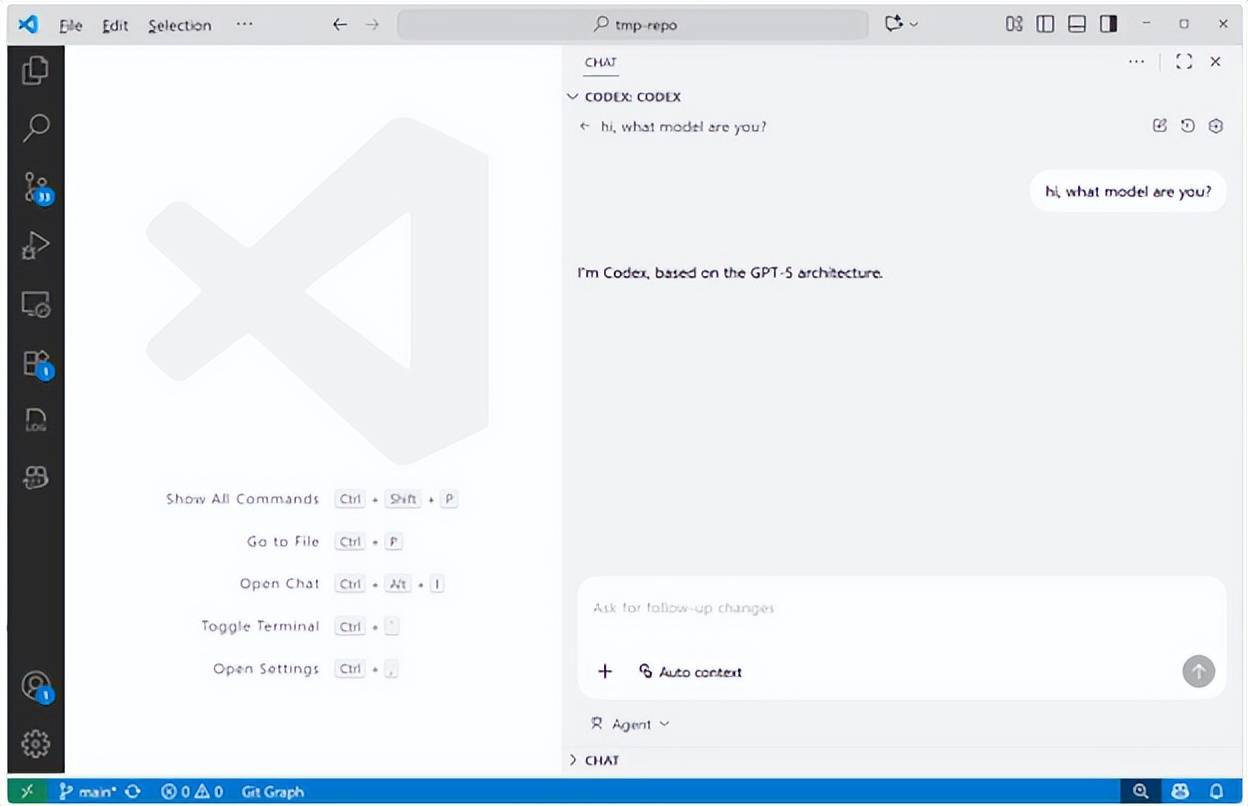
使用 AGENTS.md 进行持续引导
可以使用 AGENTS.md 文件为 Codex 提供附加说明和引导。 Codex 支持在以下位置查找 AGENTS.md 文件,并从上到下合并这些文件,从而提供关于个人偏好、项目特定细节和当前任务的上下文。
例如,为了帮助 Codex 了解如何为 Azure AI Foundry Agents(国际版)编写代码,可以使用以下内容在项目根目录中创建一个 AGENTS.md ,这些内容来自 Azure AI Agents SDK 文档:
Instructions for working with Azure AI Foundry Agents
You are an expert in the Azure AI Agents client library for Python.
Key Concepts
-
**Client Initialization**: Always start by creating an `AIProjectClient` or `AgentsClient`. The recommended way is via `AIProjectClient`.
-
**Authentication**: Use `DefaultAzureCredential` from `azure.identity`.
-
**Agent Creation**: Use `agents_client.create_agent()`. Key parameters are `model`, `name`, and `instructions`.
-
**Tools**: Agents use tools to perform actions like file search, code interpretation, or function calls.
-
To use tools, they must be passed to `create_agent` via the `tools` and `tool_resources` parameters or a `toolset`.
-
Example: `file_search_tool = FileSearchTool(vector_store_ids=[...])`
-
Example: `code_interpreter = CodeInterpreterTool(file_ids=[...])`
-
Example: `functions = FunctionTool(user_functions)`
Example: Creating a basic agent
\`\`\`python
import os
from azure.ai.projects import AIProjectClient
from azure.identity import DefaultAzureCredential
1. Create Project Client
project_client = AIProjectClient(
endpoint=os.environ["PROJECT_ENDPOINT"],
credential=DefaultAzureCredential(),
2. Get Agents Client
with project_client:
agents_client = project_client.agents
3. Create Agent
agent = agents_client.create_agent(
model=os.environ["MODEL_DEPLOYMENT_NAME"],
name="my-helpful-agent",
instructions="You are a helpful agent that can answer questions.",
)
print(f"Created agent with ID: {agent.id}")
\`\`\`
在前面的示例中,Python 代码块中的反引号进行了转义,以允许正确渲染。 \ 可以删除 's。
尝试使用 "CodexCLI"
在命令行中执行 codex 命令,可以看到无需登录,直接进入了使用页面。
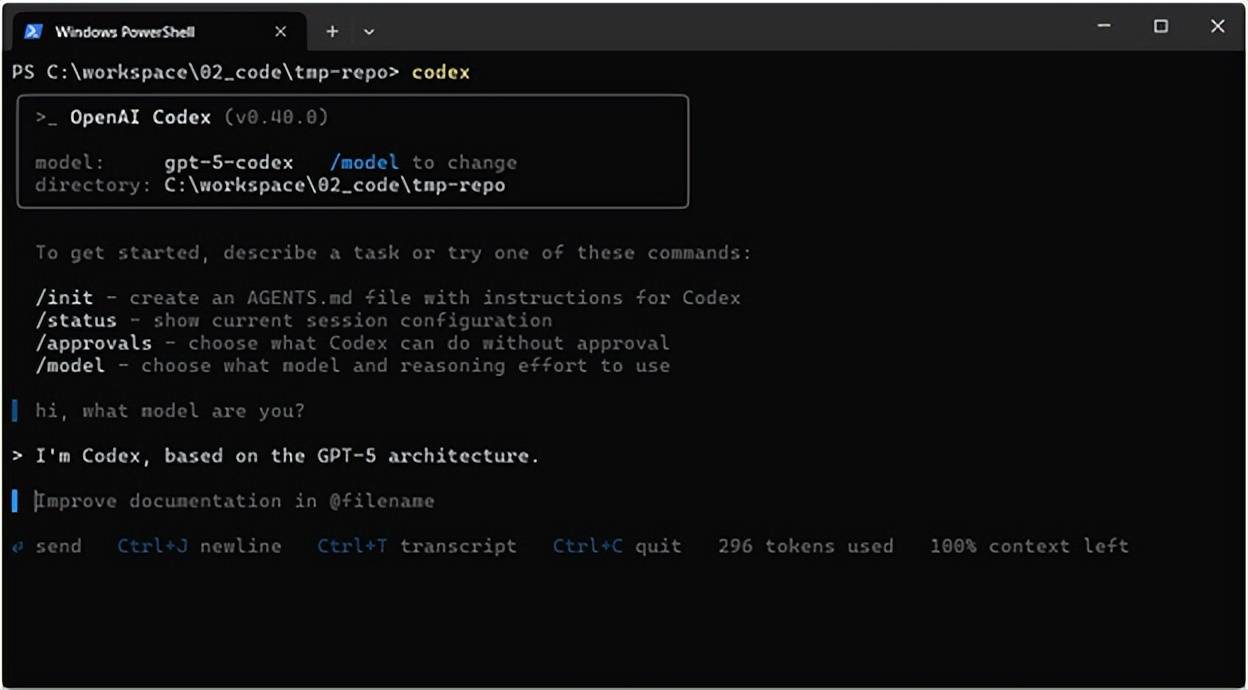
GitHub Actions 中的 Codex
Codex 可以作为持续集成(CI)管道的一部分执行。 将 API 密钥存储在存储库的机密存储 AZURE_OPENAI_KEY 中,并添加如下所示的作业,以确保在发布之前自动更新更改日志:
jobs:
update_changelog:
runs-on: ubuntu-latest
steps:
-
uses: actions/checkout@v4
-
name: Update changelog via Codex
run: |
npm install -g @openai/codex
export AZURE_OPENAI_API_KEY="${{ secrets.AZURE_OPENAI_KEY }}"
codex -p azure exec --full-auto"update CHANGELOG for next release"
作为微软中国南区核心合作伙伴及HKCSP 1T首批授权云服务商之一,领驭科技正积极整合Azure OpenAI的强大功能,包括先进的自然语言处理、分析和推理能力,到其产品和行业解决方案中。
Azure OpenAI服务通过其大规模生成式AI模型,支持企业客户根据特定需求和场景,开发创新应用,涵盖辅助写作、代码编写、多媒体内容生成以及数据分析等多个领域,为互联网、游戏、金融、零售、医药等行业以及自动驾驶和智能制造等前沿技术领域带来深远影响。